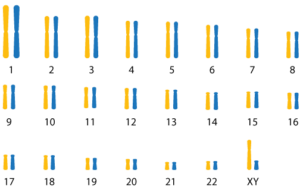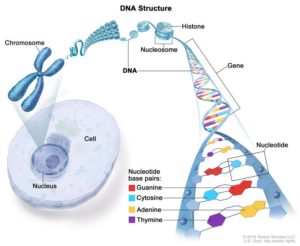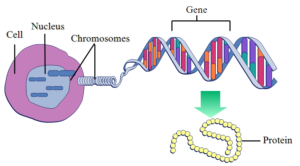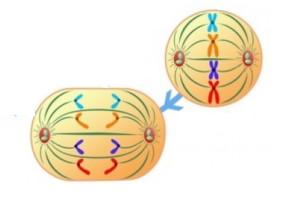THE FDA PROHIBITS EVEN INDIVIDUALS FROM MAKING CLAIMS FOR NUTRITIONAL SUPPLEMENTS IN THE POTENTIAL TREATMENT OF DISEASE. THE FOLLOWING MENTION OF NUTRIONAL SUPPLEMENTS IS PROVIDED BASED ONLY ON THE ATTACHED RESEARCH TO EXPLAIN HOW THE HUMAN GENOME RESPONDS TO FOOD SUBSTANCES AND IS NOT INTENDED AS MEDICAL OR CURATIVE ADVICE.
Most citations used are taken from the NLM data base and are in the public domain.
Lecture 1: Trisomy 21 and the link with folate deficiency
By Carina Stjernholm Hoff, Norway, 04.25.17
Summary
Your child having an extra copy of chromosome 21, is related to the maturation of the egg cell. It is found through Dixies research that the reason for the egg containing two instead of one copy of the chromosome 21, is due to a folate deficiency in that split second that the egg divides. A MTHFR gene mutation has been seen to be linked with mothers that have a child with Trisomy 21, as it gives a higher probability to be folate deficient.
The purpose of this article is to give a simplified version of what trisomy 21 is and why your child ended up having three copies of this chromosome. It also gives a very simplified explanation about DNA, chromosomes, genes and what an MTHFR mutation is and what it means.
Trisomy 21 -what is it?
Our DNA, that can be found in every cell in the body, is divided  into 23 pairs of chromosomes, named chromosome 1 to chromosome 23. Since you have half of your DNA from your mum and half the DNA from your dad, this means that you will get half of your chromosomes from your dad and half of your chromosomes from your mum, leaving you with one pair of chromosome number 1 (one from mum and one from dad) up to the last pair, which is chromosome number 23. This last pair, number 23, is what decides your sex, called the X and y chromosome. Girls have two X chromosomes (one from mum and one from dad), and boys have one X chromosome (from mum) and one Y chromosome (from dad).
into 23 pairs of chromosomes, named chromosome 1 to chromosome 23. Since you have half of your DNA from your mum and half the DNA from your dad, this means that you will get half of your chromosomes from your dad and half of your chromosomes from your mum, leaving you with one pair of chromosome number 1 (one from mum and one from dad) up to the last pair, which is chromosome number 23. This last pair, number 23, is what decides your sex, called the X and y chromosome. Girls have two X chromosomes (one from mum and one from dad), and boys have one X chromosome (from mum) and one Y chromosome (from dad).
A child having the diagnosis of Trisomy 21 (DS), means that they have two copies of every chromosome pair, except for number 21, where they have three copies. The child can survive this, a big reason being that the chromosome number 21 is so small containing relatively few genes. Still, those extra genes from the third chromosome affects the body of this child in a big way and are the reason for the health problems children and adults with DS faces. This is the sole reason why TNI (targeted nutritional intervention) is so important, and will thus be the focus for further lectures. In this lecture, we will however, solely look at the explanation behind what Trisomy 21 is, and why it happened in the first place.
Chromosomes, genes and DNA, what is what?
DNA is the hereditary material that is found in all of our cells. Chromosomes are actually long threads of DNA, and when they are curled up (around histones), we call them chromosomes. The name chromosome actually comes from a time before they even knew what DNA and genes were, the chromosomes being something they could see in a microscope. That means that the 23 pairs of chromosomes are actually 23 pairs of DNA threads, some of them longer than others. The only difference with our children with Trisomy 21 being that they have one extra DNA thread, chromosome number 21.
A DNA thread (chromosome) contains coding areas, that area always coding for a specific protein. The area that codes for one specific protein, is called a gene. That means that there are many genes on each chromosome/DNA thread. Some chromosomes are short DNA threads that don’t have that many genes on them, others are much bigger and contains a lot more genes. The smaller chromosomes can have maybe a couple of hundred genes, while the biggest ones can have over 1500 genes. The human genome (all of the DNA) contains over 22,000 genes.
It is important to emphasize that all genes are a coding part of a DNA thread, and that they always code for a protein. All enzymes in the body are proteins, and hence a lot of our genes codes for enzymes. There are thousands of different enzymes in our body continuously at work to make our body function like it should. To be extra protected all of our DNA is kept inside an extra cell membrane inside the cell, called the nucleus.
Why Trisomy 21 happened 
All egg cells and sperm cells will need to have only half of the DNA, compared to the rest of the cells in the body. That means one copy of each of the 23 chromosomes. This way the fertilized egg will end up having 23 pairs of chromosomes, one from each parent. Chromosome 21 is a very small chromosome with relatively few genes, so it is possible for a child to develop and survive with an extra copy of this chromosome.
Trisomy 21 and folate deficiency
The reason as to why your child ended up with having three copies of chromosome number 21, instead of two copies, is according to Dixies research, linked to the maturation of the egg (called meiosis). It is in the final stages of the maturation of the egg, in the division of the chromosomes, that a folate deficiency can affect the process, ending up with one matured egg cell with two copies of chromosome 21, and the other matured egg that has no chromosome number 21. When an egg with two copies of chromosome 21, meets a sperm with one copy of chromosome 21, the fertilized egg will thus end up with three copies of chromosome 21 and will then develop into a child with trisomy 21.
The reason for this is linked with folate deficiency in the egg at the moment of division. In the last stages of meiosis, the egg cell needs to divide in two, having one copy of each of the 23 chromosomes in each of the matured eggs. To be able to pull these chromosomes to each side of the dividing cell, the cells makes something called spindles. These spindles are like tiny threads that binds to the chromosomes and pull them to each side. It is therefore crucial that the spindles work properly so that they can perform this task correctly. (The picture above is showing this final stage where the spendles pull the chromosomes to each side)
Dixie Lawrence co authored the first study on MTHFR and Down syndrome pregnancies in 1999. MTHFR is a gene responsible for changing inactive folate into active folate so the cells can use it. If this gene is mutated (damaged) it is very hard to metabolize folic acid. The study has been repeated at least thirty times. All studies found that folate deficiency will impact the eggs ability to divide properly. This is because if that cell is folate deficient at that split second when it is dividing, the spindles will not be able to correctly attach to the chromosomes and pull them to the correct side. This results in one egg containing an extra copy of chromosome 21. This egg can be fertilized while the egg with only 45 chromosomes usually dies. The chromosome 21, being one of the smallest, will more easily experience this failure. One of the mature eggs, now having two copies of chromosome 21 instead of just one, once fertilized by sperm will now result in a child with Trisomy 21 (DS).
Folate deficiency
First of all, it is important to know the difference between folate and folic acid. The last one being what we usually hear about. Pregnant women, or women wanting to conceive, are told by their doctors to increase their intake of folic acid in order to prevent birth defects.However, folic acid is not in the natural form the body can use. It depends on the body to convert it into to useful folate, before it can be used properly. A lot of people cannot make this convergence from folic acid into folate very well, and without knowing it, can have big issues with the folic acid they are taking and still be folate deficient. When folic acid is not converted into the proper folate, not only is the body not getting the folate it needs, but at the same time, the folic acid is being converted into harmful toxins that can harm your body.
The MTHFR gene
Remember that genes are always coding for proteins and those proteins are often enzymes. One of the genes that gets a lot of attention when it comes to folate, is the MTHFR gene. MTHFR is an abbreviation that stands for methyltetrahydrofolate reductase, meaning that this is a gene coding for an enzyme that has to do with the production of folate in the body. We all have the same genes, but the different variations of those genes are what makes us different from each other. When a gene is known to have a different variation, we call it a mutation. As you have one MTHFR gene from your mum and one from your dad, you have two copies of that gene (The MTHFR gene is located on chromosome 1). It is not uncommon to have one mutation of this gene, but especially those who have a mutation on each of the two genes, have a clear tendency to be folate deficient. This is because the enzyme, that helps with making folate, is sometimes just 10-30 % as efficient as the typical variant of the enzyme. With an enzyme that doesn’t work as it should, not getting the right type of folate from the food/supplements, can easily lead to folate deficiency in the body.
Research has shown that a woman with a child with DS have a higher tendency to have one or two of these mutations of the MTHFR gene. That means that her children also have a higher likelihood of having a mutation. An enzyme not working properly will more likely result in folate deficiency and hence the probability of the dividing egg being folate deficient increases. As discussed above, the folate status of the egg cell directly impacts the spindles and the division of the chromosomes in the dividing egg cell. Put very simply, the more folate deficient a woman is, the more likely it is for her to have a child with Trisomy 21.
MTHFR mutations and risks of other diseases.
It is also shown that having this mutation(s) gives you a higher risk of miscarriage and still births. In addition, the MTHFR mutations also leaves you at risk for a lot of other health issues. It can therefore be important to check your MTHFR status. Proper vitamins will help greatly when dealing with MTHFR mutations. It is therefore important to know that a lot of the possible risks of having these mutations are relatively easily treatable with the right supplements (vitamins and minerals). There are a lot of information about this topic, also found on the Trisomy 21 Research page.
Carina Stjernholm Hoff holds an M.S. in Biochemistry and teaches in her native country Norway 🇳🇴
 English
English Español de México
Español de México Português
Português Français
Français